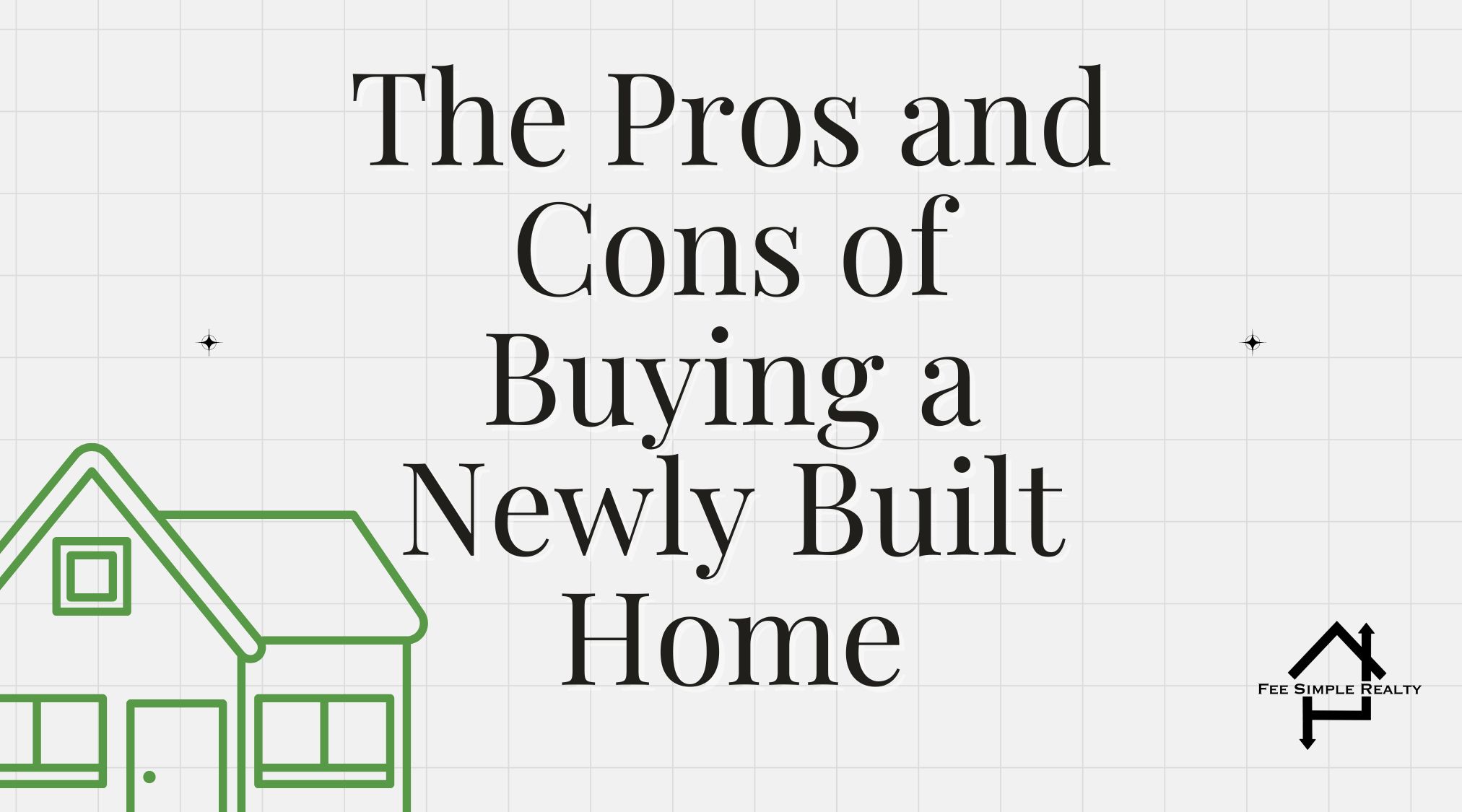The Pros and Cons of Buying a Newly Built Home
Buying a newly built home offers several advantages, from modern amenities to the ability to customize the property to your liking. However, it also comes with its own set of challenges. This post will explore the pros and cons of buying a newly built home, helping you decide if this option is right for you.
Overview: Advantages and Disadvantages of Newly Built Homes
Pros:
- Customization Options
- Energy Efficiency
- Modern Design and Amenities
- Lower Maintenance Costs
Cons:
- Higher Price Tag
- Location Considerations
- Potential Construction Delays
- Limited Room for Negotiation
Detailed Breakdown: Pros and Cons of Buying a Newly Built Home
Pros
1. Customization Options
Simple Explanation: Ability to personalize the home to your preferences.
In-Depth Analysis: One of the biggest draws of buying a newly built home is the ability to customize it according to your tastes and needs. From selecting floor plans and finishes to choosing appliances and fixtures, new builds offer a level of personalization that is hard to find in older homes. This customization ensures that the home reflects your style and meets your specific requirements.
Benefits:
- Personalized design and finishes
- Choice of layouts and floor plans
- Flexibility in upgrades and features
2. Energy Efficiency
Simple Explanation: New homes are built with the latest energy-efficient technologies.
In-Depth Analysis: Newly built homes often incorporate the latest energy-efficient technologies, including better insulation, high-performance windows, and energy-saving appliances. These features not only reduce your carbon footprint but also lower utility bills. As energy efficiency becomes increasingly important to homeowners, new builds offer a significant advantage in this area.
Advantages:
- Lower energy bills
- Environmentally friendly features
- Enhanced comfort and temperature control
3. Modern Design and Amenities
Simple Explanation: New homes come with up-to-date designs and features.
In-Depth Analysis: Modern homes are designed with contemporary lifestyles in mind, offering open floor plans, smart home technology, and the latest in kitchen and bathroom design. These amenities provide convenience, style, and functionality, making new homes particularly appealing to today’s buyers.
Key Features:
- Open and flexible floor plans
- Latest technology and appliances
- Contemporary finishes and materials
4. Lower Maintenance Costs
Simple Explanation: New homes require less maintenance.
In-Depth Analysis: With everything in the home being brand new, buyers can expect fewer maintenance issues in the early years of ownership. New homes come with warranties on construction and major systems, reducing the likelihood of unexpected repair costs. This can provide peace of mind and cost savings over time.
Cost Savings:
- Reduced need for repairs
- Warranties on construction and systems
- Lower maintenance expenses
Cons
1. Higher Price Tag
Simple Explanation: New builds are often more expensive than older homes.
In-Depth Analysis: One of the main drawbacks of buying a newly built home is the higher purchase price. New homes often come with a premium due to modern features, customization options, and the cost of new construction. Buyers need to be prepared for the possibility of paying more upfront compared to purchasing an existing home.
Challenges:
- Higher initial cost
- Potential for added expenses with upgrades
- Budget considerations
2. Location Considerations
Simple Explanation: New developments may be farther from city centers.
In-Depth Analysis: New homes are often built in developing areas, which may be farther from city centers, established neighborhoods, and amenities. While these areas may offer the promise of future growth, they might lack the convenience of more established locations. Buyers should consider the trade-off between having a new home and the potential for longer commutes or less access to amenities.
Considerations:
- Distance from city centers and amenities
- Potential for future growth
- Access to transportation and services
3. Potential Construction Delays
Simple Explanation: New builds can be delayed by various factors.
In-Depth Analysis: Construction delays are a common challenge when buying a newly built home. Weather, supply chain issues, and labor shortages can all contribute to delays, pushing back your move-in date. Buyers need to be prepared for the possibility of delays and plan accordingly.
Risks:
- Delayed move-in dates
- Impact on financing and planning
- Potential for increased costs due to delays
4. Limited Room for Negotiation
Simple Explanation: Less flexibility in negotiating price and terms.
In-Depth Analysis: Builders often have set pricing and are less willing to negotiate than private sellers. While there may be some flexibility with upgrades or closing costs, buyers should not expect significant discounts on the purchase price of a new home. This can limit your ability to get a deal compared to buying an existing home.
Challenges:
- Fixed pricing from builders
- Limited negotiation on upgrades and features
- Less flexibility compared to existing homes
Conclusion
Buying a newly built home offers many advantages, including customization options, energy efficiency, modern design, and lower maintenance costs. However, it also comes with potential downsides, such as higher prices, location considerations, construction delays, and limited room for negotiation. By weighing the pros and cons, you can determine whether a newly built
Other Related Topics
If you found this information helpful, you might also be interested in learning about the impact of property location on real estate value, how to finance your first investment property, or the benefits of green building and sustainable homes. Stay tuned for more insightful real estate posts!
Contact us today or visit our Instagram | Facebook .

Great article! I really appreciate the clear and detailed insights you’ve provided on this topic. It’s always refreshing to read content that breaks things down so well, making it easy for readers to grasp even complex ideas. I also found the practical tips you’ve shared to be very helpful. Looking forward to more informative posts like this! Keep up the good work!